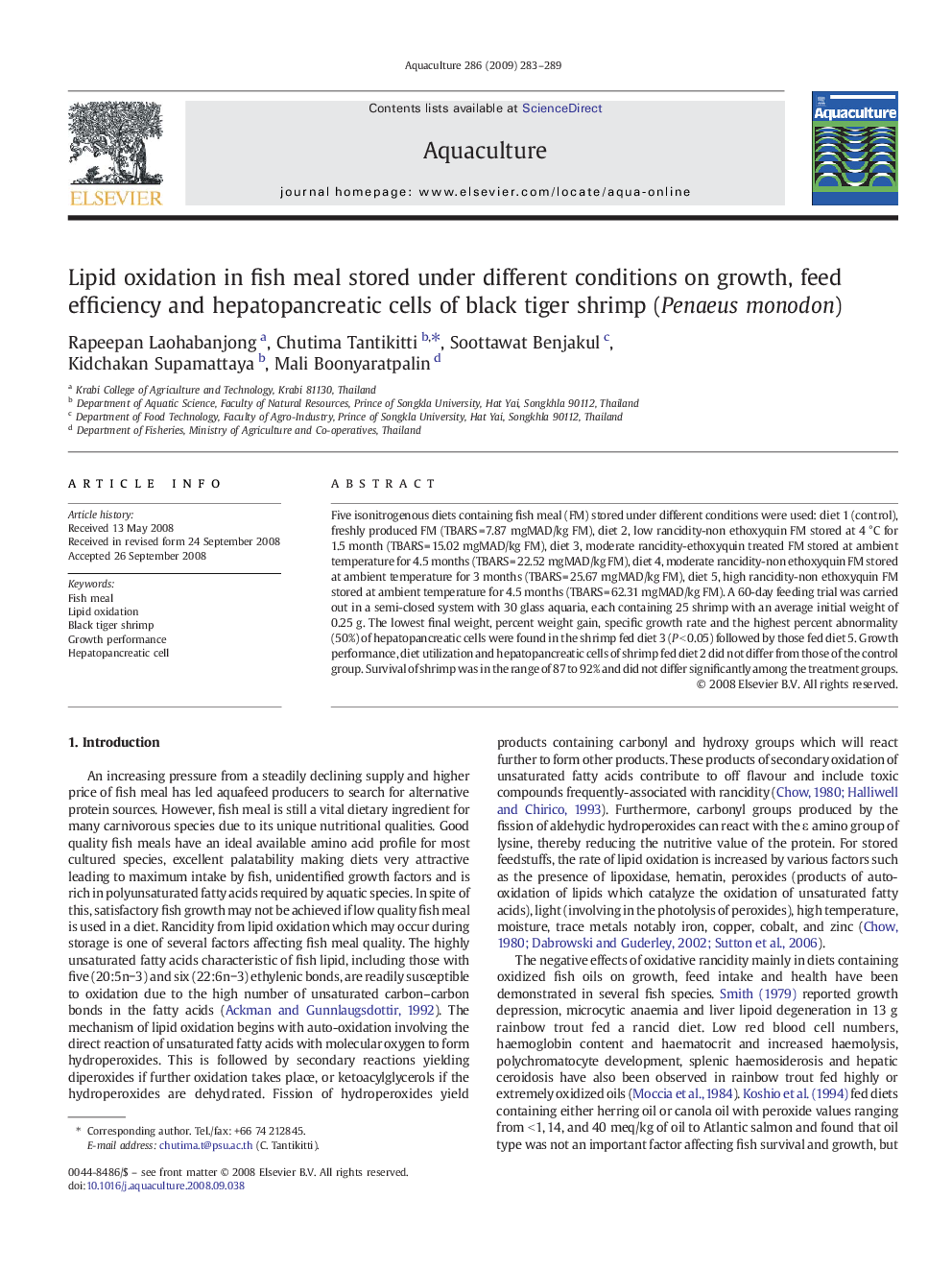| Article ID | Journal | Published Year | Pages | File Type |
|---|---|---|---|---|
| 2424204 | Aquaculture | 2009 | 7 Pages |
Five isonitrogenous diets containing fish meal (FM) stored under different conditions were used: diet 1 (control), freshly produced FM (TBARS = 7.87 mgMAD/kg FM), diet 2, low rancidity-non ethoxyquin FM stored at 4 °C for 1.5 month (TBARS = 15.02 mgMAD/kg FM), diet 3, moderate rancidity-ethoxyquin treated FM stored at ambient temperature for 4.5 months (TBARS = 22.52 mgMAD/kg FM), diet 4, moderate rancidity-non ethoxyquin FM stored at ambient temperature for 3 months (TBARS = 25.67 mgMAD/kg FM), diet 5, high rancidity-non ethoxyquin FM stored at ambient temperature for 4.5 months (TBARS = 62.31 mgMAD/kg FM). A 60-day feeding trial was carried out in a semi-closed system with 30 glass aquaria, each containing 25 shrimp with an average initial weight of 0.25 g. The lowest final weight, percent weight gain, specific growth rate and the highest percent abnormality (50%) of hepatopancreatic cells were found in the shrimp fed diet 3 (P < 0.05) followed by those fed diet 5. Growth performance, diet utilization and hepatopancreatic cells of shrimp fed diet 2 did not differ from those of the control group. Survival of shrimp was in the range of 87 to 92% and did not differ significantly among the treatment groups.
